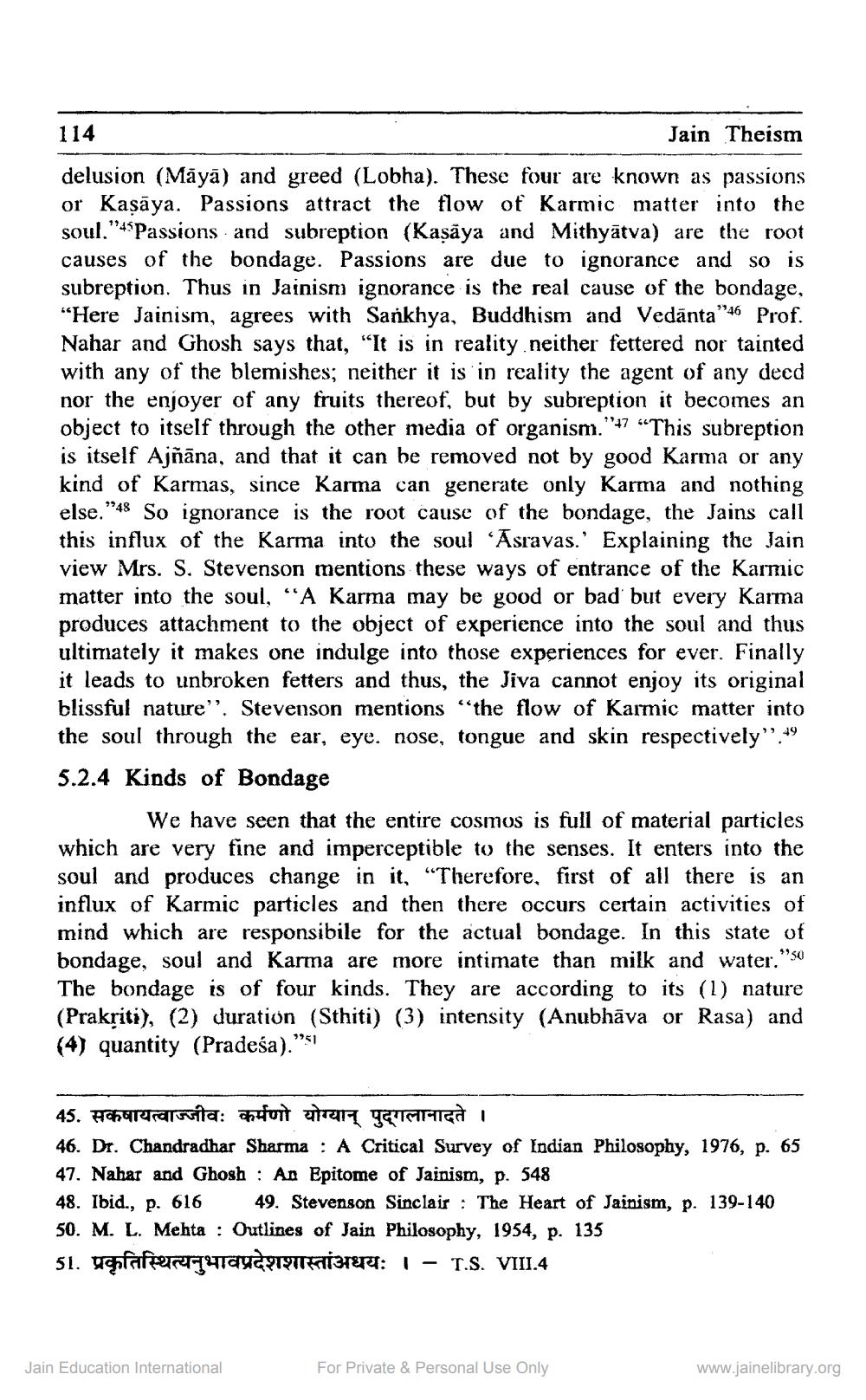________________
114
Jain Theism delusion (Māyā) and greed (Lobha). These four are known as passions or Kasāya. Passions attract the flow of Karmic matter into the soul."45Passions and subreption (Kaşāya and Mithyātva) are the root causes of the bondage. Passions are due to ignorance and so is subreption. Thus in Jainism ignorance is the real cause of the bondage, “Here Jainism, agrees with Sankhya, Buddhism and Vedānta”46 Prof. Nahar and Ghosh says that, "It is in reality neither fettered nor tainted with any of the blemishes; neither it is in reality the agent of any deed nor the enjoyer of any fruits thereof, but by subreption it becomes an object to itself through the other media of organism."'47 “This subreption is itself Ajñāna, and that it can be removed not by good Karma or any kind of Karnias, since Karma can generate only Karma and nothing else. "48 So ignorance is the root cause of the bondage, the Jains call this influx of the Karma into the soul `Asravas.' Explaining the Jain view Mrs. S. Stevenson mentions these ways of entrance of the Karmic matter into the soul, “A Karma may be good or bad' but every Karma produces attachment to the object of experience into the soul and thus ultimately it makes one indulge into those experiences for ever. Finally it leads to unbroken fetters and thus, the Jiva cannot enjoy its original blissful nature". Stevenson mentions "the flow of Karmic matter into the soul through the ear, eye. nose, tongue and skin respectively”,19 5.2.4 Kinds of Bondage
We have seen that the entire cosmos is full of material particles which are very fine and imperceptible to the senses. It enters into the soul and produces change in it, “Therefore, first of all there is an influx of Karmic particles and then there occurs certain activities of mind which are responsibile for the actual bondage. In this state of bondage, soul and Karma are more intimate than milk and water."*50 The bondage is of four kinds. They are according to its (1) nature (Prakriti), (2) Juration (Sthiti) (3) intensity (Anubhāva or Rasa) and (4) quantity (Pradeśa)."51
45. Harransvita: font orang TETIGA 46. Dr. Chandradhar Sharma : A Critical Survey of Indian Philosophy, 1976, p. 65 47. Nahar and Ghosh : An Epitome of Jainism, p. 548 48. Ibid., p. 616 49. Stevenson Sinclair : The Heart of Jainism, p. 139-140 50. M. L. Mehta : Outlines of Jain Philosophy, 1954, p. 135 51. uefafferraraud i arari: 1 - T.S. VIII.4
Jain Education International
For Private & Personal Use Only
www.jainelibrary.org




